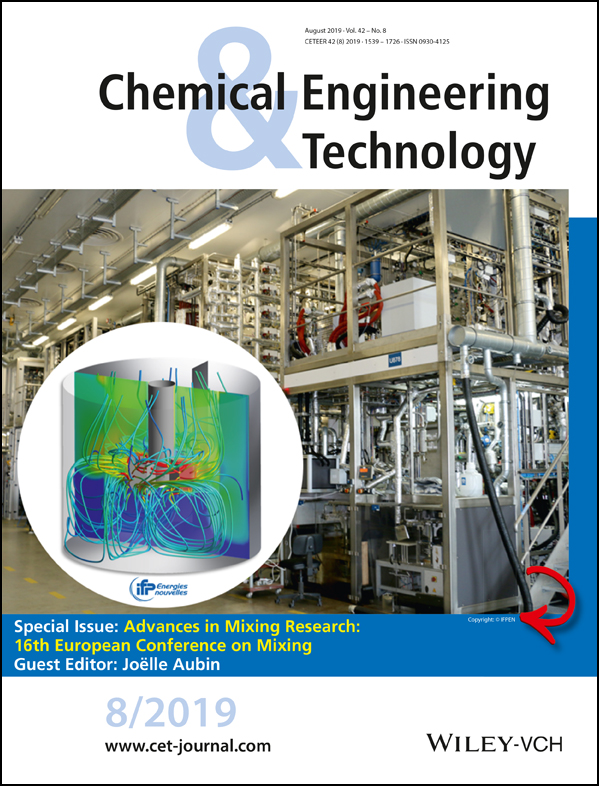Influence of Mixing on the Precipitation of Organic Nanoparticles: A Lagrangian Perspective on Scale-up Based on Self-Similar Distributions
Abstract
Precipitation of nanoparticles is applied in various fields with a rising interest in the formulation of poorly soluble drugs. The impact of fluid mixing on the precipitation of organic nanoparticles is analyzed. Direct numerical simulations are applied to determine the spatiotemporal evolution of the liquid phase composition and to estimate the particle evolution along Langragian trajectories. The simulation results are compared with laboratory experiments of mixing and particle size evolution, which use a recently developed approach to rapidly stabilize the precipitated nanoparticles. The impact of mixing on precipitation is revealed, thereby enabling a parameter-free estimation of the mean particle sizes and the particle size distributions. The distributions of residence time, supersaturation time, and particle size are self-similar for Reynolds numbers in the turbulent regime and allow the derivation of scale-up rules.




